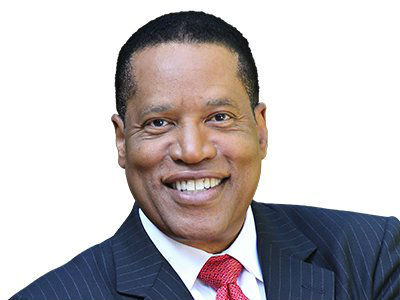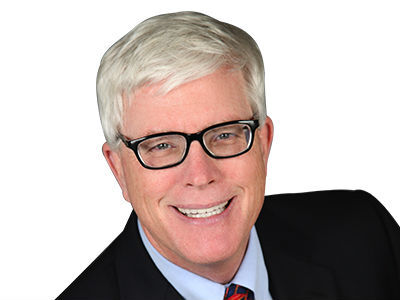Americans are sympathetic to their coworkers' mental health concerns. So why are they afraid to share their own?
Lifestyle

Audio By Carbonatix
2:00 PM on Friday, November 21
By Trevor Mahoney for Wysa, Stacker
Americans are sympathetic to their coworkers’ mental health concerns. So why are they afraid to share their own?
Workplace mental health has become a pressing issue in modern employment, especially in the wake of shifting cultural expectations. Remote and hybrid work have had a demonstrable impact, and rising rates of anxiety, depression, and burnout have raised red flags for many employers. Based on current Centers for Disease Control data, more than one in five adults in the U.S. live with a mental illness, highlighting the prevalence of this issue.
Despite increased awareness and better access to mental health benefits than ever before, many employees still hesitate to discuss their struggles at work. The gap between support and disclosure highlights a crucial issue: Resources exist, but fear of judgement and stigma, not to mention systematic barriers, continue to silence employees. Wysa put together data from sources such as the CDC, National Alliance on Mental Illness, Ipsos, and more to outline the current state of the problem, its scale, and how to work towards closing the gap.
The current state of workplace mental health
Developing an understanding of the current landscape of workplace mental health is the first step towards building a solution.
Mental health challenges are a widespread issue, costly, and deeply influenced by expectations passed on through generations. At the same time, however, employees are now gaining access to workplace resources. Yet, they are hesitant to use them. By examining the scope of the issue and its factors, a better grasp on why the issue continues to challenge organizations can be developed.
The scale of the problem
Mental health concerns are not a fringe issue; instead, they are core to the modern workplace. Data shows one in five adults in the United States currently lives with a mental illness, but those statistics just scratch the surface of the situation.
According to a World Health Organization study released in 2024, an estimated 12 billion working days are lost annually worldwide due to anxiety and depression, potentially costing $1 trillion in lost productivity. Performance, absenteeism, and turnover can all be impacted by mental health challenges.
The generational impact
Generational differences play a key role in how employees perceive and disclose their mental health struggles. Younger employees within the millennial or Gen Z generations are far more likely to expect mental health support as part of their workplace benefits. In fact, a 2024 joint Ipsos and National Alliance on Mental Illness study of over 2,000 working adults found that Gen Z workers were nearly twice as likely as Baby Boomers to prioritize their mental health resources in the workplace.
While this may seem like a good thing on the surface, there is an additional underlying issue at play. Younger generations are also reporting higher levels of burnout and stress, creating the need for a workplace that has additional benefits.
The disclosure dilemma: Why employees stay silent
Despite increasing mental health support at many companies around the globe, many employees clearly still feel unsafe sharing their struggles. That same joint Ipsos-NAMI poll revealed that nearly 60% of employees worried about the negative consequences if they disclosed a mental health condition. Silence doesn’t mean that a problem doesn’t exist; it could mean that employees are quietly struggling without making use of the resources available to them.
Fear of negative consequences
Even when organizations strive to provide benefits to their employees, many workers hesitate to use them out of fear of backlash. The perception of negative consequences, whether related to career advancements, workplace relationships, confidentiality, or something else, can be a powerful motivator to stay silent. There are a few distinct reasons why employees hesitate to speak up in the workplace.
The top barriers to disclosure
The general fear of stigma is certainly one of the greatest barriers that keeps workers silent. Worries about being labeled “unstable” or “unreliable” can make someone fear they are risking a promotion or even their jobs by speaking up. Three of the biggest barriers to disclosing mental health concerns, as outlined in the Ipsos-NAMI poll, include:
- Concern over career advancement opportunities being limited after the fact
- Fears that managers or colleagues will view the employee differently
- Belief that mental health struggles are a personal issue as opposed to a workplace one
While someone is certainly validated in their feelings on whether or not to speak up on mental health issues, the above reasons should not hold anyone back.
Awareness and access challenges
Even when benefits exist, it’s entirely possible that employees may not know how to access them. Data from the Society for Human Resource Management’s Employee Mental Health in 2024 study found that 67% of workers were either unaware or only partially aware of resources offered to them. This lack of clarity creates another barrier in and of itself. Namely, employees don’t want to risk disclosure without guaranteed privacy and support, especially if they don’t think there are resources available to them.
Legal framework: What employers must provide
While culture and stigma play large roles in the mental health space, the legal framework matters too. U.S. law provides certain protections and requirements that employers need to follow to support employees who are living with mental health conditions. Knowing these regulations can help workers and organizations alike figure out their rights and responsibilities.
Americans with Disabilities Act (ADA) requirements
The definition of a disability as outlined by the Americans with Disabilities Act is a physical or mental impairment that substantially limits one or more major life activities. Under this act, employers are required to provide reasonable accommodations to employees with qualifying mental health conditions.
These accommodations could include flexible scheduling, modified job duties, quiet workspaces, and more. Importantly, though, the ADA also prohibits discrimination based on mental health conditions, giving employees legal protections against bias.
Family and Medical Leave Act (FMLA) protections
The FMLA is another act that provides eligible employees with up to 12 weeks of unpaid, job-protected leave for serious health conditions. Mental health is included. This means that workers can seek treatment without fear of losing their jobs. Unfortunately, this doesn’t address all the aforementioned barriers, as a lack of pay and cultural stigma around taking a leave can still play a role.
Common workplace mental health benefits and services
Beyond the minimum legal requirements, many organizations now choose to offer a range of mental health benefits. These services can vary widely in their scope and effectiveness, from traditional Employee Assistance Programs to more robust insurance coverage and digital wellness tools.
Employee assistance programs (EAPs)
EAPs are typically the first line of support for employees as they offer services such as confidential counseling, referral services, and crisis management. Data from the SHRM study, however, indicates that utilization rates of these services average under 10%, meaning there is still a gap to be filled. Better communication and cultural reinforcement can improve this.
Comprehensive mental health coverage
Beyond EAPs, progressive employers have taken further steps and offer expanded health plans that include therapy, psychiatry, and digital mental health platforms. Some organizations will even go as far as to cover activities such as mindfulness training, resilience coaching, on-demand counseling, and other services that can bolster mental health.
Building trust and psychological safety
Policies and benefits alone are not enough to guarantee a supportive workplace. It is the responsibility of every employer to build an environment where employees feel safe disclosing mental health struggles. Organizations need to foster an environment of trust and psychological safety in order to accomplish this. Without these foundations in place, even the most generous benefit programs may go unnoticed.
Feeling as if you can speak up without fear of punishment or humiliation is a true sign of psychological safety. Without it, employees will always feel uncomfortable disclosing their struggles, even if benefits to help with those struggles exist. Consider some of the following trust-building strategies to foster this psychological safety:
- Normalize conversations about mental health
- Ensure confidentiality in both Human Resources and managerial discussions
- Model vulnerability by having leaders openly share their own challenges when appropriate
Actionable strategies for managers
Managers often play a critical role in shaping how employees’ experiences with mental health in the workplace pan out. After all, they are often the first point of contact when employees face challenges; yet, many managers feel unprepared to respond effectively. By providing training, tools, and strategies, managers can create a supportive environment where their employees feel comfortable opening up.
Manager training and development
Since many managers lack training specifically on mental health awareness, this should be the first investment. Programs designed to help managers recognize warning signs of mental health issues and how to respond empathetically can transform workplace culture. Similarly, managers should also be given first aid training for mental health crises.
Similar to CPR training, this training can help empower managers to intervene early in psychological emergencies. This will further help to reduce stigma and risk.
Practical conversation strategies
Another useful tactic for managers to consider is adopting open-ended questions, rather than targeted ones such as “Are you stressed?” Changing the wording allows for the creation of space for dialogue, rather than forcing disclosure, which can lead an employee to feel uncomfortable.
Reducing stigma through leadership
Anybody can be faced with mental health challenges, and seeing acknowledgment from senior leaders about their own struggles can go a long way. Whether it’s you as a manager setting the tone or the CEO themselves during a town hall, discussing how one has benefited from therapy can signal that mental health care isn’t a weakness, but rather a part of holistic health.
Creating organizational change
True progress in the battle against mental health issues requires systematic change. While individual managers and programs are important, the most effective companies are those that embed mental health support into their values and overarching strategy. This means designing comprehensive policies, measuring their respective impacts, and then adapting them to fit evolving workplace needs.
Comprehensive mental health strategy
Having only reactive benefits at your organization is a downside. A strong mental health strategy should include preventative initiatives such as stress management classes or resilience workshops, inclusive policies such as flexible work arrangements, and regular communication so that employees know the resources available to them and how to access them.
Measuring success and continuous improvement
Metrics are essential for accountability with a company-wide mental health plan. Employers should be able to track the utilization rate for their mental health resources (anonymously), conduct surveys on comfort with disclosures, and turnover or absenteeism trends that are related to mental health challenges. Regular assessment will allow an organization to refine its strategies and close the gap between the number of employees with mental health concerns and those seeking treatment.
Moving from intention to action
Ensuring workplace health is no longer just an option perk, but rather a necessity for modern organizations. A deep disconnect still remains, though, between the benefits offered and the willingness of employees to make use of them. Bridging this gap will require more than just legal mandates and policy updates. Companies need to place a concerted effort on transforming their culture into one of trust, transparency, and psychological safety.
This story was produced by Wysa and reviewed and distributed by Stacker.

























